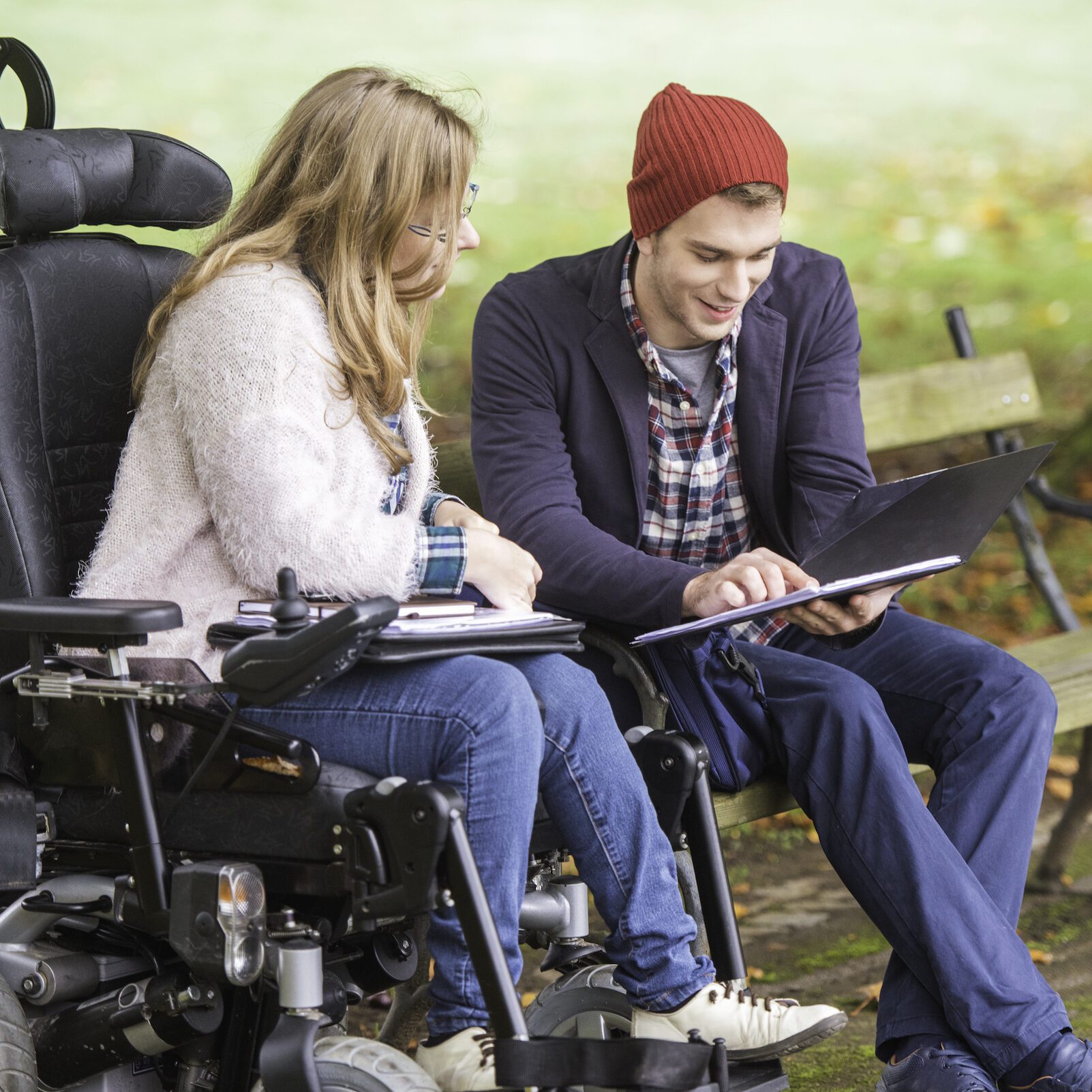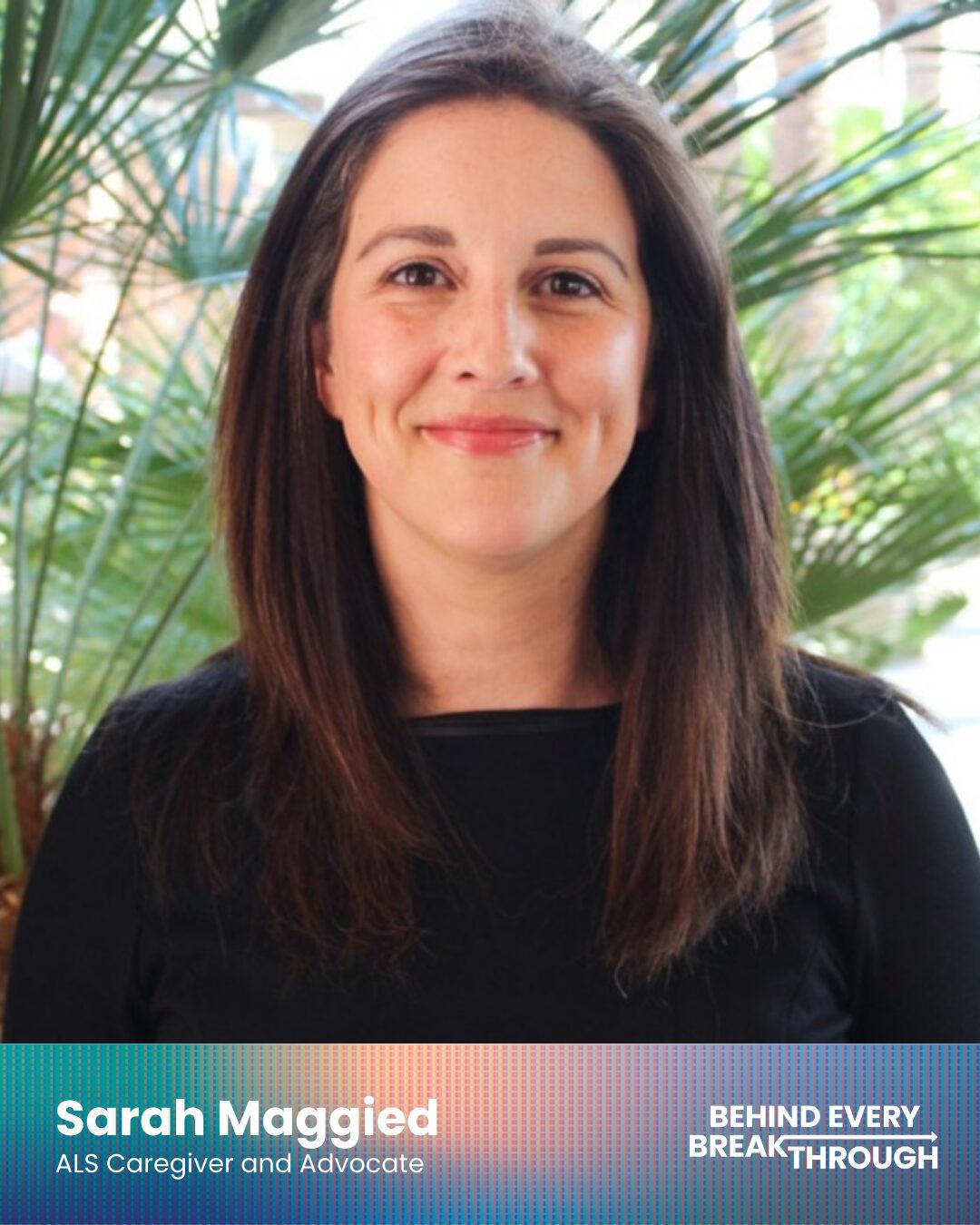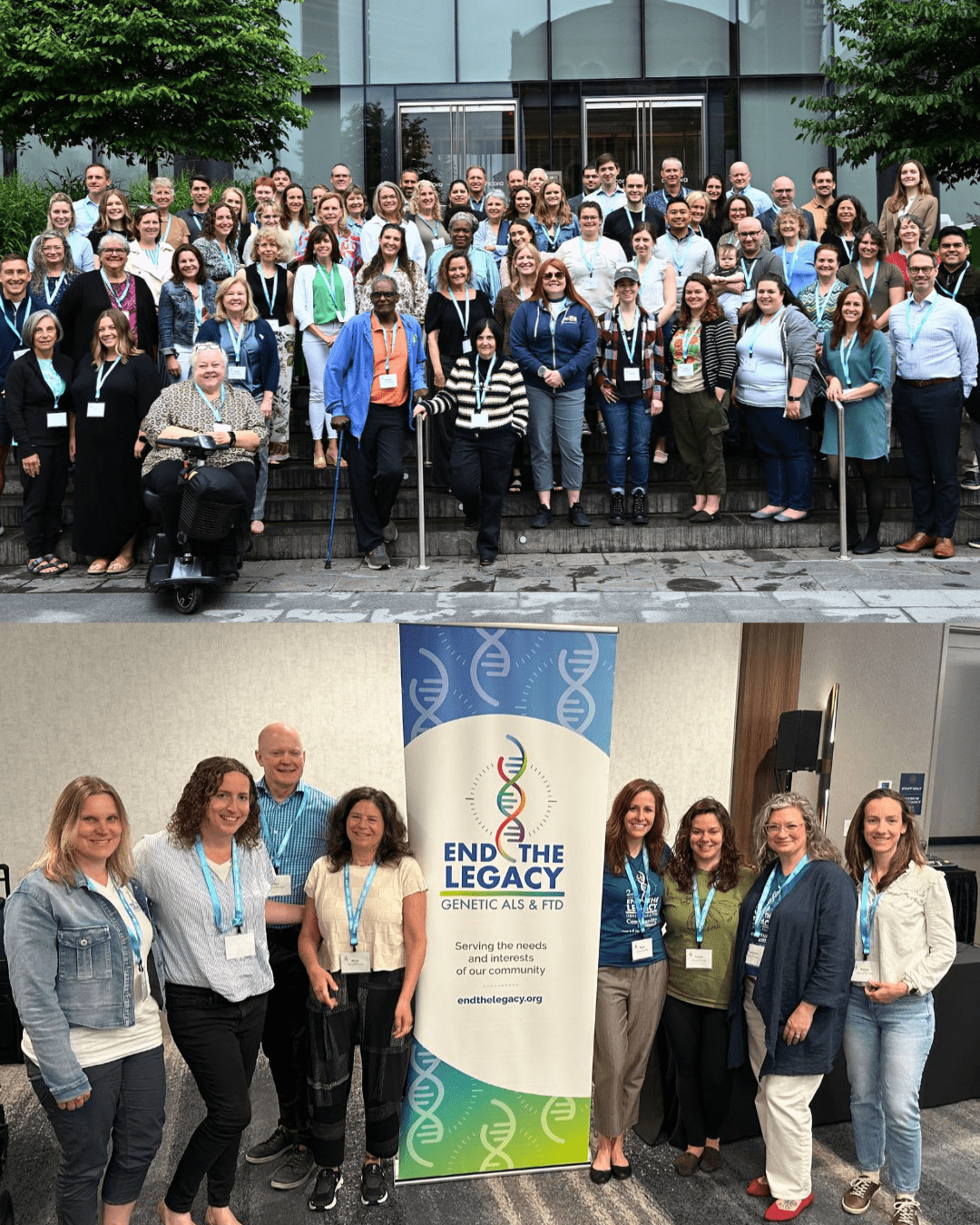On May, 22, 2025, we hosted a webinar to go inside the mission of Target ALS. At the live event, Dr. Manish Raisinghani, CEO, and Dr. Amy Easton, Senior Director of Scientific Programs, discussed why ALS is such a difficult disease to tackle, the barriers slowing progress in research, and how Target ALS’ unique model is designed to overcome these challenges. If you missed the webinar check out the recording below. Scroll down to view answers to the questions we didn’t have time to get to live.
Audience Questions and Answers
We asked registrants to submit questions in advance of the webinar, and we weren’t able to get to everything on the live event. Please find the questions and answers we didn’t get to live below.
QUESTIONS ABOUT ALS RESEARCH
Q: Since TDP-43 moving from the nucleus to out in the cell cytoplasm is present in about 97% of ALS patients, why can’t this be identified earlier on in the disease to become a reliable biomarker?
A: Given the key role of TDP-43 in ALS, 30% of the Target ALS research portfolio is dedicated to this area. Our strategic approach is to advance our understanding of TDP-43 dysfunction and toxicity by funding research to study the details of TDP-43 pathology and to advance development of new therapeutics and biomarkers. We recently published a comprehensive blog about all of the research we’re supporting to tackle TDP-43 , which you can find at this link: https://www.targetals.org/2025/05/22/tackling-tdp-43/
Q: Are you supporting research into the immune system in ALS?
A: We are funding several studies focused on the role of the immune system in ALS. You can read more about a few of these studies in this blog: https://www.targetals.org/2024/06/28/identifying-novel-drug-targets-als-treatment/. We are currently working on a report covering the research presented at our recent Annual Meeting in May, which will have more information about ongoing studies on the immune system in ALS. We’ll send this out via email once it’s completed.
Q: Are you supporting research into the gene mutation TBK-1?
A: Yes, we are funding research on TBK-1 and related pathways that regulate autophagy – the process of breaking down cellular debris, removing and recycling it. One early stage drug discovery project, led by a collaborative consortium from UCSF and Denali Therapeutics, is seeking to identify biomarkers of disrupted autophagy and to develop antisense oligonucleotide (ASO) therapeutics targeting TBK-1. A second project, led by Juliet Goldsmith, PhD, of Thomas Jefferson University, is focused on studying cellular and molecular events caused by mutations in the Ubiquilin gene that lead to disrupted autophagy. Please sign up for our newsletter and follow us on social media to hear more updates on these projects: https://www.targetals.org/join-us/
Q: With the number of different gene mutations associated with ALS, will we need to develop different medications targeting each specific mutation?
A: Yes, there will be different medications, in many cases gene therapies, for individuals carrying different ALS mutations (eg. Ataxin-2 repeat expansion vs C9orf72 repeat expansion). These gene therapies can directly tackle the cause of disease. It is also important to understand the biology of these genes further before targeting them directly to avoid adverse effects. In addition, we fund research on therapeutics that can normalize biological pathways that are disrupted amongst all people with ALS and may play a large role in influencing disease progression and survival, like neuroinflammatory and mitochondrial pathways.
Q: Any updates on the ATXN2 risk factor mutation?
A: A clinical trial run by Biogen testing an ASO (antisense oligonucleotide) therapy designed to reduce levels of mutant Ataxin 2 protein completed in 2024 and, despite successfully lowering Ataxin 2 protein, did not have any clinical benefit nor did the researchers detect lowering of Neurofilament Light (NfL), a biomarker of neurodegeneration. Several biotech companies continue to develop gene therapies to reduce or edit the mutant gene or transcript, however it’s unclear how close those programs are to entering clinical trials.
Q: Are you looking at variants and doing methylation studies?
A: Yes, we are running long-read sequencing with Pacific BioSciences on postmortem tissue and blood samples from people living with ALS. We share these data with the research community broadly through the Target ALS Data Engine. Long-read sequencing will detect methylation signatures and novel variants that might not be detected with short-read sequencing. In addition, we are funding research by Albert LaSpada, MD, PhD, of UC Irvine and collaborators to apply specialized techniques to identify epigenetic signatures in plasma cell-free DNA.
Q: What is genome sequencing and why is it important?
A: Genome sequencing is a technique that determines the entire genetic makeup of a person. This is important for scientists to identify potential genetic risk factors and targets for treatments. All of the biosamples we collect through our ALS Global Research Initiative (AGRI) undergo genome sequencing, and that data is made immediately available to the scientific community via our Data Engine to advance research efforts. You can learn more about AGRI at www.targetals.org/agri.
Q: How are you lowering barriers to animal model access for ALS research?
A: Advancing potential therapeutics from the lab to the clinic requires rigorous animal testing to prove both the therapeutics’ safety and potential to significantly modify disease. Our Animal Models Core breaks down barriers to animal model access through three mechanisms to facilitate cutting-edge preclinical ALS research: funds to test potential therapeutics in animal models at contract research organizations (CROs), support to develop new mouse models, and generation and integration of multi-omic datasets from animal models into our Data Engine. In 2024, we launched two In Vivo Target Validation grant programs, one with Biospective’s TDP-43 mouse model and the other with The Jackson Laboratory’s C9orf72 mouse model. This year, we launched a second program with Biospective, and winners will be announced in Summer 2025. Additionally, the SOD1 mutant model remains a helpful animal model, if used properly, for the community. These mice are available through The Jackson Laboratory. We are currently surveying the landscape and have identified new, potentially useful rodent and non-rodent based models that may provide advantages over existing models. We will post updates on access to these new models on our website later in 2025.
Q: Why after all these years this disease is so underfunded? What is the impact of budget cuts from the NIH on ALS research?
A: ALS remains underfunded compared to other diseases, in part because of its complexity, the relatively smaller patient population, and historical gaps in awareness. Budget cuts at NIH and other public agencies will deepen this challenge and potentially slow progress. At Target ALS, we’re working hard to raise funds for, and support high-impact research. Thanks to strong private philanthropic support, we’ve been able to continue advancing our mission without interruption. But to truly accelerate breakthroughs, the ALS research needs sustained, increased investment—from both public and private sources.
Q: Is there a standard way to categorize ALS patients in disease stages? Is the ALSFRS-R still the best primary endpoint in clinical trials?
A: There’s no single universally accepted system for categorizing ALS patients by disease stage, but one of the most widely used is the ALS Functional Rating Scale, and its revised version, the ALSFRS-R, which scores a person’s ability to perform daily tasks across areas like speech, mobility, and breathing. It’s a helpful proxy for disease severity and is often used in both clinical care and as a clinical endpoint in ALS trials because it offers a standardized way to measure functional decline. However, its limitations are well recognized, and researchers are actively exploring additional or complementary endpoints, including biomarkers and digital measures, to improve sensitivity and better capture treatment effects. At Target ALS, we do not treat people with ALS directly. However, through our Global Natural History Study, we’re collecting detailed clinical and biospecimen data—including ALSFRS-R scores—to enable more precise biomarker discovery and insights into disease staging.
QUESTIONS ABOUT TARGET ALS
Q: Do you facilitate access to postmortem biobank tissues?
A: Yes, the Target ALS Postmortem Tissue Core has been providing expeditious and no-strings-attached access to postmortem brain and spinal cord tissue from ALS and healthy control cases since 2014. To date, more than 350 publications have cited access to this resource in their work. Currently, Target ALS Postmortem Tissue Core integrates six centers within and outside the USA with expertise in ALS and postmortem tissue banking, providing scientists with access to high-quality, well-characterized human tissue samples. We also generate large multi-omic datasets from the postmortem tissue and all data is uploaded to the Postmortem Tissue Collection on the Target ALS Data Engine at dataengine.targetals.org. You can learn more about the resource and submit tissue requests at https://www.targetals.org/resource/human-postmortem-tissue-core/.
Q: How can early-career scientists best engage with the collaborative ecosystem that Target ALS is building, and are there specific programs designed to support new entrants to the field?
We have created several programs to encourage emerging researchers to focus on ALS, including our Springboard Fellowship, New Academic Investigator, Early Stage Clinician, and Neurology Resident grant programs. The next cycle of our Springboard Fellowships will open for applications in June 2025. You can stay updated on announcements by signing up for emails and checking our website at: https://www.targetals.org/grants/. In addition, our Research Cores provide critical scientific tools and resources to the global research community, whether or not you have received funding support from Target ALS. You can learn more at: https://www.targetals.org/grants/. We also encourage emerging investigators to get in touch with Target ALS to help facilitate their networking with the broader ALS research community of scientists in academia and pharma/biotech industry.
Q: How is Target ALS leveraging data and AI for ALS research?
A: In March 2024, we launched the Target ALS Data Engine, a first-of-its kind platform that hosts comprehensive datasets to accelerate biomarker and drug discovery for ALS. Built with DNAstack and Verily, the Data Engine provides no-strings-attached access to multi-omic datasets for the global scientific community. As we continue to update and grow the Data Engine, we are creating a resource for scientists to leverage AI and machine learning. You can learn more and check out the Data Engine at dataengine.targetals.org.
Q: Does Target ALS facilitate introductions between academic institutions and potential commercial partners and/or investors?
A: Yes, since our inception, our innovation ecosystem has played a critical role in the global ALS research community by connecting these constituencies. We regularly connect academics, pharma/biotech and venture capital based on mutual interests to facilitate and forge collaborations between them.
Q: How does Target ALS incorporate the voice of people with lived experience in funding decisions and collaborative research projects?
A: To ensure the best ideas in ALS research are funded through a fair and transparent review process, all Target ALS funding decisions are made solely by our Independent Review Committee (IRC) with no involvement from Target ALS staff or leadership. The IRC is composed of experts from academia and the biotech/pharma industry and abides by a strict conflict of interest policy which also stipulates that members on this committee can neither apply for, nor receive Target ALS funding. While our Board of Directors does not select grantees, it plays an important oversight role and includes members with lived experience of ALS. We’ve also established a Community Advisory Group made up of people living with ALS and their loved ones. This group provides guidance on how we can better communicate with the ALS community and ensures our work is informed by the perspective of those with lived experience.
The content on this site is for informational purposes only and does not constitute medical advice. Always consult with your doctor or other healthcare provider for any questions you may have regarding your health or a medical condition.




